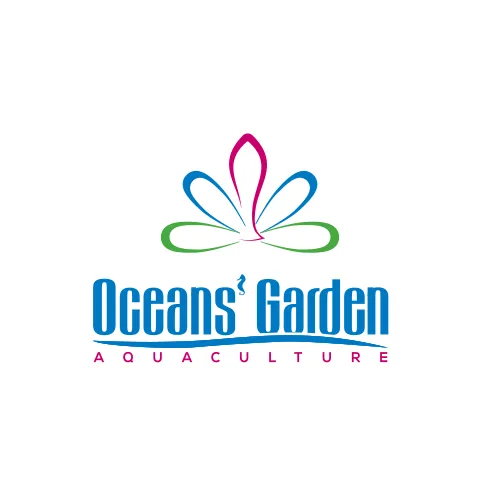Top 10 Most Popular Reef Safe Fish for Your Saltwater Aquarium

When choosing fish for your reef aquarium, popularity often indicates long-term reef tank compatibility. Based on actual aquarium sales data from 2025, we've compiled the definitive list of the most sought-after reef safe fish among hobbyists nationwide. These ten species combine stunning beauty with reliable performance in home aquariums.
Each fish on this list has earned its popularity through hardiness, reef safety, visual appeal, and compatibility with other species. Whether you're planning your first reef tank or expanding an existing system, these proven performers offer the best chance of long-term success.
Quick Reference: The Top 10
- Ocellaris Clownfish (Amphiprion ocellaris)
- Banggai Cardinalfish (Pterapogon kauderni)
- Pajama Cardinalfish (Sphaeramia nematoptera)
- Orange Spotted Goby (Valenciennea puellaris)
- Firefish Goby (Nemateleotris magnifica)
- Lawnmower Blenny (Salarias fasciatus)
- Yellow Watchman Goby (Cryptocentrus cinctus)
- Blue Tang (Paracanthurus hepatus)
- Lyretail Anthias (Pseudanthias squamipinnis)
- Midas Blenny (Ecsenius midas)
| Fish | Tank Size | Care Level | Best For |
|---|---|---|---|
| Ocellaris Clownfish | 20+ gal | Beginner | Classic reef fish |
| Banggai Cardinalfish | 30+ gal | Intermediate | Peaceful groups |
| Pajama Cardinalfish | 30+ gal | Beginner | Community tanks |
| Orange Spotted Goby | 40+ gal | Intermediate | Sand maintenance |
| Firefish Goby | 20+ gal | Beginner | Nano reefs |
| Lawnmower Blenny | 30+ gal | Beginner | Algae control |
| Yellow Watchman Goby | 30+ gal | Intermediate | Symbiotic behavior |
| Blue Tang | 75+ gal | Intermediate | Active swimming |
| Lyretail Anthias | 75+ gal | Advanced | Schooling beauty |
| Midas Blenny | 30+ gal | Beginner | Golden beauty |
Why These Fish Dominate Sales Charts
The marine aquarium hobby has evolved significantly, with hobbyists becoming increasingly selective about their fish choices. The species that consistently top sales charts share several key characteristics:
Proven Reef Compatibility: Every fish on this list has been kept successfully by thousands of reef keepers. Unlike species with questionable reef safety, these fish have demonstrated consistent behavior that won't harm corals or invertebrates.
Exceptional Hardiness: Popular fish tend to be forgiving of minor water parameter fluctuations and adapt well to aquarium life.
Outstanding Visual Appeal: The most popular reef fish combine vibrant colors with interesting behaviors that make them captivating to observe.
Wide Availability: Success in captive breeding programs has made these species readily available as healthy, aquarium-adapted specimens.
How We Determined the Rankings
This list reflects actual purchasing patterns from 2025 marine fish sales data, representing thousands of transactions across the reef keeping community. Unlike subjective "best of" lists, these rankings are based on quantifiable demand from real aquarists making real purchasing decisions.
The data reveals clear preferences among reef keepers, with certain species consistently outperforming others in sales volume.
The Top 10 Most Popular Reef Safe Fish
1. Ocellaris Clownfish (Amphiprion ocellaris)
The iconic Ocellaris Clownfish claims the top spot as 2025's most popular reef safe fish, representing the quintessential reef aquarium fish that launched countless marine keeping journeys. This species embodies everything hobbyists seek: stunning appearance, bullet-proof hardiness, and perfect reef compatibility.
Why It's So Popular
Beyond their instant recognition factor, Ocellaris Clownfish offer unmatched reliability for new reef keepers. Their hardy nature forgives beginner mistakes, while their engaging personality and host anemone relationships provide endless fascination.
Key Benefits:
- Iconic appearance everyone recognizes
- Extremely hardy and forgiving
- Fascinating behavior with anemones
- Breeding potential in home aquariums
Reef Safety
Absolutely reef safe in every respect. Clownfish actively benefit reef systems by bringing food to host anemones and helping maintain water circulation around coral formations.
Care Requirements
- Tank Size: 20 gallons minimum
- Temperature: 72-82°F (very adaptable)
- Diet: All prepared foods
- Compatibility: Peaceful with virtually all species
Pro Tip
Consider captive-bred specimens, which adapt better to aquarium life and support sustainable aquaculture practices. For more guidance on selecting your first marine fish, see our complete guide to coral reef fish which covers species compatibility and natural behaviors.
2. Banggai Cardinalfish (Pterapogon kauderni)
The elegant Banggai Cardinalfish captures second place with its distinctive black and white striped pattern and peaceful demeanor. This species represents the perfect balance of visual impact and community compatibility that reef keepers prize.
Why It's So Popular
Banggai Cardinals offer sophisticated beauty without territorial issues common in many marine fish. Their unique pattern resembles no other reef species, making them instant conversation pieces. Additionally, their schooling behavior creates dynamic group displays.
Key Benefits:
- Unique striped pattern unlike any other fish
- Peaceful schooling behavior
- Fascinating breeding displays
- Perfect community fish
Reef Safety
No risk to corals or invertebrates with zero reported cases of coral harassment. These fish focus entirely on planktonic foods in the water column and show no interest in sessile invertebrates.
Care Requirements
- Tank Size: 30 gallons minimum
- Temperature: 74-78°F
- Diet: Frozen mysis, quality pellets
- Compatibility: Exceptionally peaceful
Pro Tip
Maintain groups in odd numbers (3, 5, or 7) to prevent pairing aggression while encouraging natural schooling behavior.
3. Pajama Cardinalfish (Sphaeramia nematoptera)
Securing third place, the Pajama Cardinalfish brings whimsical charm to reef aquariums with its polka-dotted pattern and oversized eyes. This species proves that unique appearance combined with easy care creates lasting popularity.
Why It's So Popular
The Pajama Cardinal's distinctive spotted pattern and peaceful nature make it ideal for community reef tanks. Their nocturnal tendencies add interest during evening viewing, while their schooling behavior creates beautiful group dynamics.
Key Benefits:
- Whimsical polka-dot pattern
- Large expressive eyes
- Nocturnal activity for evening viewing
- Easy group maintenance
Reef Safety
Completely reef safe, showing no aggression toward corals or invertebrates. These fish maintain their position in the water column and focus exclusively on planktonic prey.
Care Requirements
- Tank Size: 30 gallons minimum
- Temperature: 72-78°F
- Diet: Frozen foods, small pellets
- Compatibility: Extremely peaceful
Pro Tip
Provide cave-like structures where these fish can retreat during bright daylight hours, mimicking their natural habitat preferences.
4. Orange Spotted Goby (Valenciennea puellaris)
The Orange Spotted Goby claims fourth place as a functional beauty that combines stunning appearance with beneficial sand-sifting behavior. This species exemplifies the dual-purpose fish that modern reef keepers value.
Why It's So Popular
Beyond their attractive orange spotted pattern, these gobies provide valuable substrate maintenance services. Their constant sand-sifting behavior helps prevent anaerobic zones while creating natural substrate turnover.
Key Benefits:
- Beautiful orange spotted pattern
- Natural sand maintenance
- Functional substrate cleaning
- Peaceful bottom dweller
Reef Safety
100% coral-safe, these gobies focus exclusively on substrate organisms and detritus. They contribute to overall reef health through their cleaning activities.
Care Requirements
- Tank Size: 40 gallons minimum
- Temperature: 72-78°F
- Diet: Sinking foods, substrate organisms
- Substrate: Fine sand required
Pro Tip
Provide supplemental feeding with sinking foods to ensure adequate nutrition, as substrate organisms alone may not meet all dietary needs.
5. Firefish Goby (Nemateleotris magnifica)
The graceful Firefish Goby secures fifth place with its flowing fins and vibrant coloration that transitions from white to yellow to red. This species represents the perfect nano reef fish, offering maximum visual impact in minimal space.
Why It's So Popular
Firefish combine stunning beauty with perfect reef compatibility in a compact package. Their hover-feeding behavior and dramatic coloration make them captivating to observe, while their peaceful nature ensures community compatibility.
Key Benefits:
- Stunning gradient coloration
- Elegant flowing fins
- Perfect for nano reefs
- Fascinating hovering behavior
Reef Safety
No threat to corals or invertebrates, focusing entirely on planktonic foods in the water column. These fish show no interest in corals or invertebrates.
Care Requirements
- Tank Size: 20 gallons minimum
- Temperature: 72-78°F
- Diet: Small foods, zooplankton
- Special Needs: Secure lid (jumpers!)
Pro Tip
Provide multiple cave-like retreats and allow Firefish to acclimate gradually to new environments, as they can be sensitive to sudden changes.
6. Lawnmower Blenny (Salarias fasciatus)
The industrious Lawnmower Blenny takes sixth place as the ultimate algae-controlling reef fish. This species proves that functional fish can also be entertaining, combining effective algae management with comical personality traits.
Why It's So Popular
Lawnmower Blennies offer unmatched algae control services while providing endless entertainment through their active foraging behavior and expressive faces. Their ability to maintain clean glass and rockwork makes them invaluable.
Key Benefits:
- Excellent algae control
- Entertaining personality
- Clean glass and rocks
- Hardy and adaptable
Reef Safety
Completely reef safe, these blennies focus exclusively on algae and detritus. They help maintain optimal conditions for coral growth through their cleaning activities.
Care Requirements
- Tank Size: 30 gallons minimum
- Temperature: 72-78°F
- Diet: Algae, supplemental foods
- Special Needs: Established tank with algae
Pro Tip
Supplement their diet with algae-based foods if natural algae growth is insufficient, and provide multiple territories if keeping more than one specimen.
7. Yellow Watchman Goby (Cryptocentrus cinctus)
The fascinating Yellow Watchman Goby claims seventh place through its unique symbiotic relationship with pistol shrimp and striking yellow coloration. This species offers one of the most interesting behavioral displays available in reef keeping.
Why It's So Popular
The partnership between Yellow Watchman Gobies and pistol shrimp creates one of nature's most fascinating symbiotic relationships observable in home aquariums. Their bright yellow coloration and active burrowing behavior provide constant entertainment.
Key Benefits:
- Bright yellow coloration
- Fascinating symbiosis with shrimp
- Natural burrowing behavior
- Interactive personality
Reef Safety
No risk to corals, these gobies focus on small organisms in the substrate and water column. Their burrowing activities occasionally rearrange substrate but don't harm corals.
Care Requirements
- Tank Size: 30 gallons minimum
- Temperature: 72-78°F
- Diet: Small foods, substrate organisms
- Substrate: Deep sand bed (3+ inches)
Pro Tip
Introduce pistol shrimp and goby simultaneously when possible, and provide adequate substrate depth for proper burrow construction.
8. Blue Tang (Paracanthurus hepatus)
The iconic Blue Tang secures eighth place as one of the most recognizable and beloved reef fish in the hobby. Despite requiring larger tanks, their stunning blue coloration and active swimming behavior make them irresistible to reef keepers with adequate space.
Why It's So Popular
Blue Tangs offer unmatched visual impact with their electric blue and black pattern. Their active swimming and algae-grazing behavior add constant movement to reef displays, while their peaceful nature ensures community compatibility.
Key Benefits:
- Electric blue coloration
- Active swimming behavior
- Natural algae control
- Iconic recognition factor
Reef Safety
Absolutely reef safe, focusing on algae growth and small organisms. Their grazing behavior actually benefits reef systems by controlling nuisance algae.
Care Requirements
- Tank Size: 75+ gallons minimum
- Temperature: 72-78°F
- Diet: Algae-based foods, quality pellets
- Special Needs: Excellent water quality
Pro Tip
Provide varied diet with substantial algae content, maintain excellent water quality, and ensure adequate swimming space to prevent stress-related health issues.
9. Lyretail Anthias (Pseudanthias squamipinnis)
Taking ninth place, the elegant Lyretail Anthias brings schooling beauty and vibrant coloration to reef systems. This species represents the pinnacle of reef fish aesthetics, offering dynamic group displays and stunning individual specimens.
Why It's So Popular
Lyretail Anthias provide unmatched elegance through their flowing fins, vibrant pink and orange coloration, and graceful swimming behavior. When maintained in appropriate groups, they create spectacular schools.
Key Benefits:
- Elegant flowing fins
- Vibrant pink/orange colors
- Beautiful schooling behavior
- Advanced hobbyist appeal
Reef Safety
100% coral-safe, these planktivorous fish focus exclusively on zooplankton in the water column. They never interact with corals except to provide natural water circulation.
Care Requirements
- Tank Size: 75+ gallons minimum
- Temperature: 72-78°F
- Diet: Multiple daily feedings, planktonic foods
- Social Needs: Groups of 5+ individuals
10. Midas Blenny (Ecsenius midas)
Rounding out our top ten, the stunning Midas Blenny brings golden beauty and entertaining personality to reef aquariums. This species combines brilliant yellow-orange coloration with the practical benefits and charm that make blennies so beloved by reef keepers.
Why It's So Popular
The Midas Blenny offers a perfect combination of visual appeal and functional benefits. Their brilliant golden-yellow coloration rivals any marine fish, while their active personality and algae-grazing behavior provide both entertainment and practical tank maintenance. Unlike some blennies, Midas Blennies are excellent community fish that rarely show aggression toward tank mates.
Key Benefits:
- Brilliant golden coloration
- Active entertaining personality
- Peaceful community behavior
- Natural algae control
Reef Safety
Completely reef safe, Midas Blennies focus exclusively on algae, detritus, and small planktonic foods. They never bother corals or invertebrates, making them perfect additions to any reef system.
Care Requirements
- Tank Size: 30 gallons minimum
- Temperature: 72-78°F
- Diet: Algae, quality pellets, frozen foods
- Compatibility: Peaceful with all species
Pro Tip
Provide multiple perching spots and caves throughout the rockwork, as Midas Blennies enjoy observing their territory from various vantage points while staying close to secure retreat areas.
Building Your Reef Community
These top 10 reef safe fish represent proven performers that consistently deliver beauty, compatibility, and reliability. When planning your reef community, consider how these species complement each other. For the complete selection of compatible species, browse our reef safe fish collection to discover additional options that work well with these popular choices.
For Nano Reefs (20-40 gallons):
- Ocellaris Clownfish
- Firefish Gobies
- Midas Blenny
For Medium Systems (40-75 gallons):
- Add Banggai Cardinals
- Pajama Cardinals
- Lawnmower Blennies
For Large Displays (75+ gallons):
- Include Blue Tangs
- Lyretail Anthias groups
Understanding coral reef fish biology helps ensure compatibility when mixing species. For comprehensive species information, see our complete guide to coral reef fish which covers natural behaviors and compatibility requirements in detail.
Why These Rankings Matter
These rankings reflect current preferences based on 2025 sales data, but the marine aquarium hobby continues evolving. Captive breeding programs are expanding availability of previously rare species, while new discoveries occasionally introduce exciting options.
However, the fundamental qualities that make these ten species popular—reef safety, hardiness, beauty, and compatibility—will likely keep them at the top of aquarist wish lists for years to come.
Explore our complete reef safe fish collection to find these popular species and discover why they've earned their place as the most sought-after reef fish of 2025. Each species offers proven performance backed by thousands of successful aquarium experiences.
Whether you're planning your first reef tank or expanding an existing system, these ten species provide the foundation for spectacular reef communities that will thrive for years to come.




